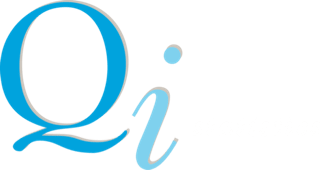Other course information
Part 1: Introduction and Basics
Session 1: Pre-recorded session available from 30th Sept – watch at your leisure
Survey Design Essentials
-
- Identify your key objectives
- Survey design top tips
- Survey representativeness
- Bias
- Sample size – do you have enough data?
- Data cleaning & pre-processing
- Dealing with Missing data
Session 2: Tues 3rd Oct, 2pm BST (GMT+1/UTC+1)
Simple summaries of the responses and looking for associations
-
- Data types
- Cross tabs and chi-square tests
- Correlation – and causation vs correlation
- Converting data into insight – Linking back to objectives & presenting technical information to non-technical people
Part 2: Making comparisons, looking for trends and patterns (across products, between groups, over time, etc.)
Session 3: Tuesday 10th Oct, 2pm BST (GMT+1/UTC+1)
Multivariate approaches – Correspondence analysis (CA), Visualizations and Multiple Correspondence Analysis (MCA)
Session 4: Wednesday 18th Oct, 2pm BST (GMT+1/UTC+1)
Standard approaches 1 – Analysis of Variance (ANOVA)
Session 5: Tuesday 24th Oct, 2pm BST (GMT+1/UTC+1)
Standard approaches 2 – Linear Regression
Part 3 – Looking Deeper into Survey Analysis: Identifying and Quantifying Trends and Patterns
Session 6: Thursday 26th Oct, 2pm BST (GMT+1/UTC+1)
Machine Learning 1: Segmenting your data into groups of people that behave/answer similarly to identify key customer groups
- AHC clustering
- K-Means clustering
Session 7: Tuesday 31st Oct, 2pm (GMT/UTC)
Machine Learning 2: Measuring latent concepts and condensing my survey into themes
- Factor analysis
Trainers
The Analysis of Survey Data Course will be led by Gemma Hodgson and Joshua Brain.
Follow this link to be introduced to your trainers https://www.qistatistics.co.uk/about/
Course Notes
- Modular online course – you can attend as many modules as you like – module 1 is free if any of the other modules are selected
- Your own laptop is required with XLSTAT Installed (if you do not have XLSTAT already, you can download the trial for the course and then purchase afterwards if you want to buy it
- Sessions are designed to be 1.5h in length, but please book 2 hours for the session in case of technical issues or extra time needed for questions/finishing exercises
- Course materials will be sent in advance of each session, and include pdfs of slides, plus workshops and datasets
Discounts
We offer a 10% discount on registrations when two or more people from the same company register for the same course at the same time. We also offer a 10% discount for members of academia – please choose the appropriate option when purchasing.
Registration Policy
Registration is not final until payment is received. Unpaid spaces will be opened to new registrants 30 days ahead of course.
Payment
Payment can be made in GBP, EUR or USD. Please choose the appropriate currency when you checkout.
Refund policy
Cancellation of registration can be made up to 14 days ahead, and return of payments, minus reasonable administrative expenses, will be made for these cancellations. Cancellations within 7 days of the course start will receive a credit for a future course. Registrants who fail to attend or cancel less than 7 days prior to the seminar start date are responsible for the entire fee. Substitution of another person for the same course may be made at any time as long as payment is made.
Course Cancellation
Qi Statistics Ltd retains the right to cancel the course 14 days before the start date if less than 4 delegates have registered by that date. Please contact us directly if you have any queries in this regard.






